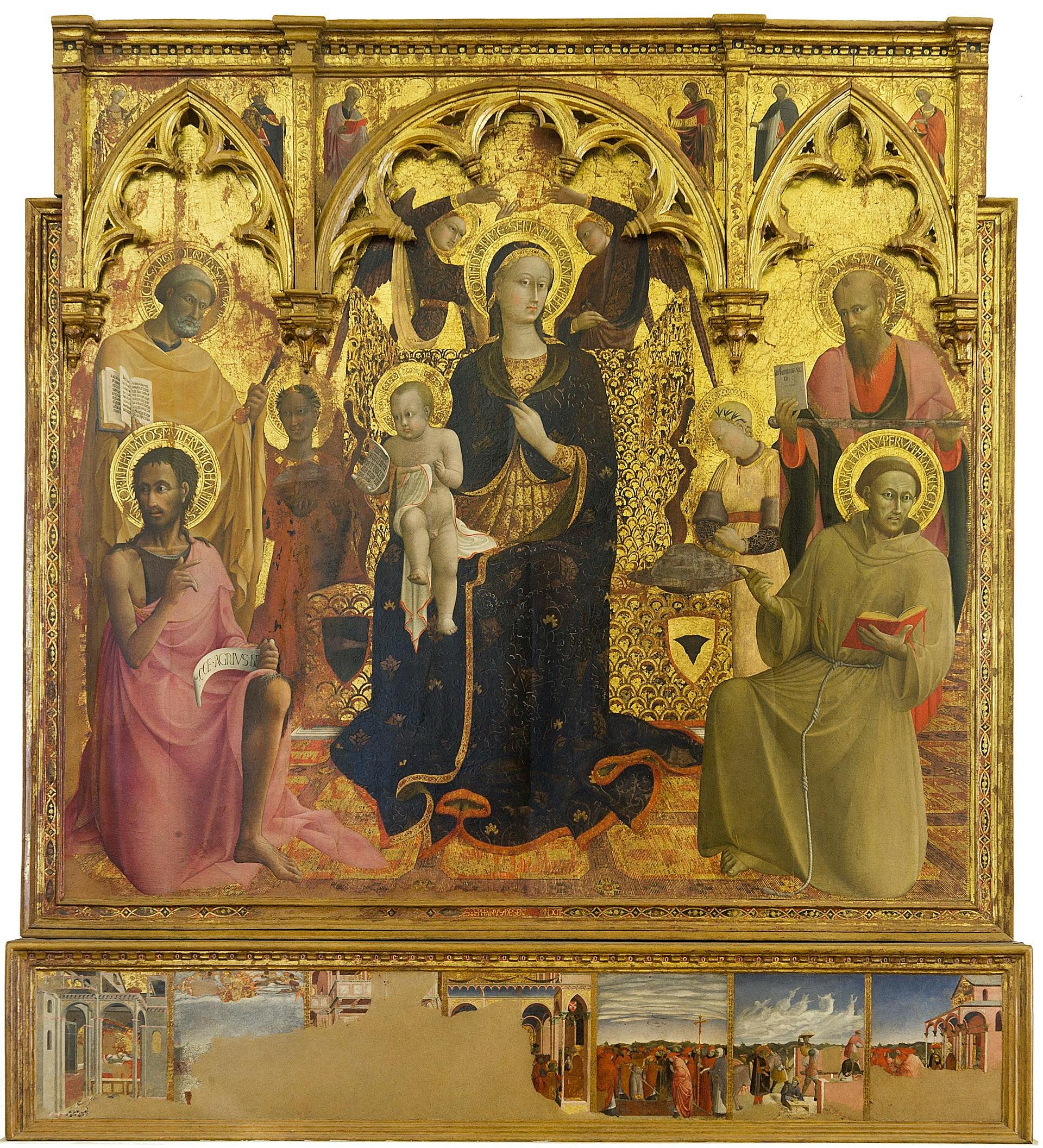Madonna of the Snow Altarpiece
Stefano di Giovanni, detto il Sassetta (Cortona? 1400 c. - Siena 1450)
“Stefanus de Senis… pinxit” on the bottom part of the altarpiece
Commissioned by Ludovica Bertini, rich Sienese widow of Turino di Matteo, this altarpiece was painted in 1432 by Sassetta, one of the most famous painters from Siena in the 15th century.
The painting, which has passed into history with the name of “Madonna of the Snow” shows the Virgin enthroned with the Child and crowned by two angels. Behind the holy group are two more angels, one of whom holds a tray filled with snow, while the other is making a snowball in his hands; to the sides are the saints Peter and Paul (standing) and John the Baptist and Francis (kneeling). This latter, in particular, is a reference to the purchaser, Ludovica Bertini, who, after the death of her husband, entered the Franciscan order, as well as the two emblems on the base of the throne which refer to the families of the woman and her husband.
The altarpiece is divided into seven compartments: it narrates the events of the miracle of the Madonna of the Snow, connected with the foundation of the basilica of Santa Maria Maggiore in Rome. According to tradition, the original perimeter of the Roman church was mapped out in the snow by Pope Liberius, after an extraordinary snowfall in August 352.
Destined to the Chapel of San Bonifacio in the Duomo of Siena, this large altarpiece is one of the most significant examples of Sienese Renaissance art. It represents an obvious step in the passage from the traditional triptych to the square panel, with references both to the elegance of the Gothic art of Simone Martini to the Renaissance art of Masaccio.
From the late 16th century onwards, the painting was moved several times around the province of Siena, between San Galgano and Chiusdino. It was purchased by the Contini Bonacossi family in 1936.
